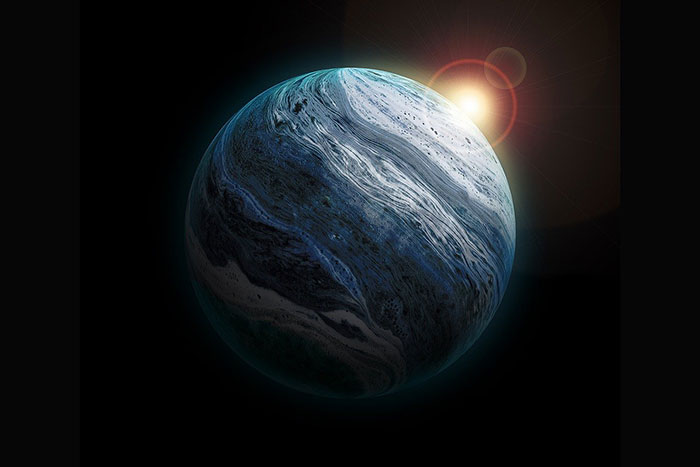There is immense radiation coming from Jupiter, the biggest planet in our solar system, that causes the right side of its moon Europa to glow in the dark. According to a new study, scientists said this phenomenon could help them probe further if this body has the potential to sustain some form of life.
The study, published Monday in the journal Nature Astronomy was carried out by NASA scientists to examine how Jupiter’s radiation impacts the chemistry of Europa, which scientists believe contains a subsurface ocean of water.
Telescopes are yet to observe the glow; however, there’s a study to be undertaken by scientists in the future, which will determine if Europa really glows in the dark.
For this investigation, researchers at NASA’s Jet Propulsion Laboratory in Pasadena, California, built a below-freezing “ice-chamber” containing the same chemicals found on Europa’s icy surface. These chemicals will be subjected to a beam of high-energy electrons to simulate the radiation from Jupiter.
Murthy Gudipati, an astrophysicist at the Jet Propulsion Laboratory and lead author of the study, said that when his team subjected the chamber to the electron beam, it glowed. And when the electrons were switched off, the glow went off.
Europa’s radiation is a result of Jupiter’s huge magnetosphere, which, asides from that of the sun, is the most powerful magnetic field in our solar system. This radiation is generated by metallic hydrogen in the planet’s highly-pressurized core.
Jupiter’s magnetosphere creates an invisible flat disk that is about 12 million wide – a figure that is significantly bigger than the one million wide orbits of Europa. Humans will not survive a few seconds under the radiation from this magnetosphere. Gudipati said the interactions of its simulated radiation experiment were studied using remote cameras.
Asides from Jupiter’s radiation, which breaks water ice into oxygen and hydrogen, increasing the likelihood that there may be oxygen passed down to the liquid ocean underneath, there was also evidence pointing to key chemical and physical changes in European’s crust.
When the researchers changed the chemicals that they assumed will be combined with ice on Europa’s surface – chemicals like sodium chloride (table salt) and magnesium sulfate (Epsom salt), they discovered that the different salted ice glowed with varying colors of green, blue or white, and at different intensities.
Gudipati said that this experiment was an eye-opener for the team, who realized that the ice glow depended on the kind of material that existed there.
There will be a probe of Europa before the turn of the decade, which confirm Europa’s subsurface ocean and evaluate if some form of life could live there. Scientists expect to find fossils of life that evolved in Mars or Venus billions of years ago.
Europa Clipper Project, as the probe of Europa is known, will dive between 15 and 60 miles above the Europa surface to avoid the intense radiation thought to make life more likely on the planet.
Source: cnn.com









